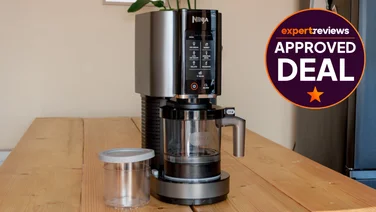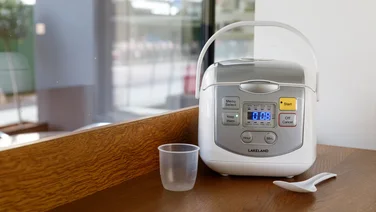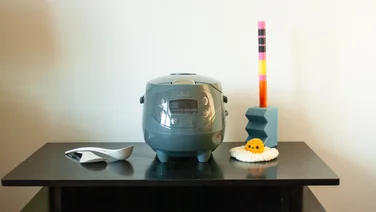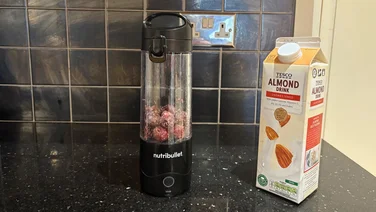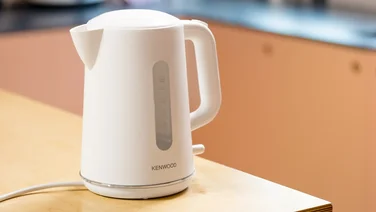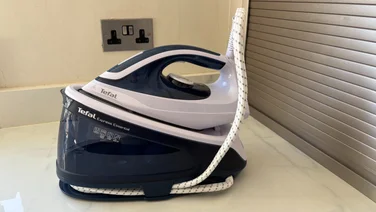To help us provide you with free impartial advice, we may earn a commission if you buy through links on our site. Learn more
- Best products for cleaning a kettle
- 1. Quickshine Kettle Descaler Sachets: Most environmentally friendly commercial descaler
- 2. CalSolve Kettle and Coffee Machine Descaler: Best descaling liquid
- 3. Chef Aid Stainless Doughnut Kettle Descaler: Best way to discourage limescale
- 4. Breville VKJ972 Filter Maxtra Kettle: Best kettle for hard water areas

Limescale build-up is a major problem in the UK, with over half the population living in hard water areas. Almost all kitchen appliances are affected, but kettles are particularly prone to getting clogged up with chalky scale, and need regular cleaning so they continue to work efficiently – and to ensure you don’t get unwelcome chalky white deposits floating in your next cup of tea. Here’s our guide to the quickest and easiest ways to clean your kettle, and the best products to use.
Why do I need to clean my kettle?
Limescale isn’t harmful, but it’s unsightly, it affects the taste of water and it makes your kettle less efficient, taking longer to boil and reducing its lifespan. It was a major problem for older kettles with exposed elements, which would regularly end up caked in scale. Today, the element is usually hidden under a flat metal base, which protects it for much longer.
This doesn’t mean the problem of limescale has disappeared altogether, however. Limescale can still build up inside metal kettles (including stovetop designs), and while plastic kettles don’t attract scale, their metal base plates are still susceptible. A built-in spout filter will ensure you don’t get bits of scale in your drinks, but the internal build-up still needs to be dealt with from time to time.
What’s the best way to clean my kettle?
You have two options – use a commercial descaler, or opt for a more natural descaling route.If you want to take the former approach, there’s a multitude of descaling products available in the shops, many designed specifically for metal or plastic kettles, and some of them surprisingly friendly to the environment. These are generally easy to use and effective; the downside is they’re normally pricier than natural methods – and not all descalers suit all types of kettles, so always check. You’ll find our top recommendations below.
Natural kettle cleaners
If you’d prefer to use everyday household ingredients to clean your kettle, you have two main options. The first is vinegar: fill your unplugged kettle with a mixture of half white vinegar and half water and leave it to soak overnight. By morning, the limescale should fall off in chunks. Rinse the inside thoroughly, and boil at least one batch of fresh water before brining the kettle back into service. This descaling method is cheap and environmentally friendly; the downside is it can be pretty smelly.
If that doesn’t suit, a popular alternative is lemon juice. Quarter-fill an unplugged kettle with lemon juice and leave it for an hour, then top up the kettle with water and boil it. Pour away the boiled water before it cools, then rinse thoroughly with several changes of cold water. This smells a lot nicer than vinegar, and is very environmentally friendly – but it uses a lot of lemons.
Whichever method you use, if there’s a lot of limescale, you may have to repeat the treatment more than once to completely clear out the scale.
How often should I descale my kettle?
I you live in a hard water area then you really ought to descale your kettle about once a month: the more you let limescale build up, the harder it becomes to remove. However, if you live in a soft water are, with low concentrations of calcium and magnesium, you may be able to get away with descaling much less frequently, or not at all.
What sort of kettles are easiest to clean?
Ideally, you want a nice wide, accessible opening at the top so you can easily inspect the inside of your kettle, and give it a gentle scrub if need be. With some kettles, it’s hard to get to the bottom and sides, especially if you have large hands, as the lid opening is quite narrow. And if your kettle has an integrated spout filter to catch scale and impurities, it’s very helpful if this is removable, as this makes it much easier to clean.
Can a water softener help?
Water softeners remove the calcium and magnesium that cause scale from your tap water, via a process called ion-exchange. Your kettle – along with other home appliances such as washing machines and dishwashers – will last longer and perform better if you have one.
Block salt softeners are the most convenient, but they take up a lot of space and they don’t come cheap. You can have one fitted under the kitchen sink, or in a utility room or garage, and once installed the only running cost is buying the salt. Softened water doesn’t taste so good, though – you might want to consider getting a separate tap installed for drinking water.
Best products for cleaning a kettle
1. Quickshine Kettle Descaler Sachets: Most environmentally friendly commercial descaler
Price when reviewed: £3.99 | Buy now from Lakeland

These simple tea-bag-style descaler sachets work quickly, taking only around 25 minutes in total. And they contain no hazardous chemicals, which makes them environmentally friendly – the manufacturers say there’s nothing more dangerous in them than strong lemon juice. This also means they can be used in all types of kettle. To use, just boil the kettle, pop in one of the three descaler bags and leave it to fizz before rinsing it. What could be easier?
2. CalSolve Kettle and Coffee Machine Descaler: Best descaling liquid
Price when reviewed: £13.99 | Buy now from Amazon

CalSolve’s descaler is another very simple descaling product. Simply fill up your kettle, bring it to the boil, then immediately add two tablespoons of this stuff and let it bubble away (it really does bubble) for 30 minutes before finally bringing the kettle to the boil again. Empty, rinse and repeat – and the inside of your kettle should be as good as new. We found it worked wonders, although some customers say that heavy limescale build-ups may need a few extra repetitions. That’s no problem though, as you get a generous quantity for the price.
3. Chef Aid Stainless Doughnut Kettle Descaler: Best way to discourage limescale
Price when reviewed: £1.95 | Buy now from Amazon

Prevention is better than cure, and this little stainless steel widget lives in your kettle and attracts limescale, rather than leaving it to stick to the inside of your kettle. You have to shake it out and rinse it regularly, and some people say it can give a slightly metallic taste to hot drinks, but we didn’t notice a problem. Some limescale will still end up in your kettle, which will need removing in the traditional way, but this device certainly reduces the problem.
4. Breville VKJ972 Filter Maxtra Kettle: Best kettle for hard water areas
Price when reviewed: £33.99 | Buy now from Amazon

This clever kettle features an integrated Brita filter which eliminates impurities in the water, so scale becomes a non-issue. If there’s a catch, it’s that the filtration cartridge needs periodic replacement – but an indicator on the kettle will tell you when it’s time, and replacements aren’t too expensive, at around £6 per hundred litres of water. The contemporary design looks smart, and its large size is great for family use.






